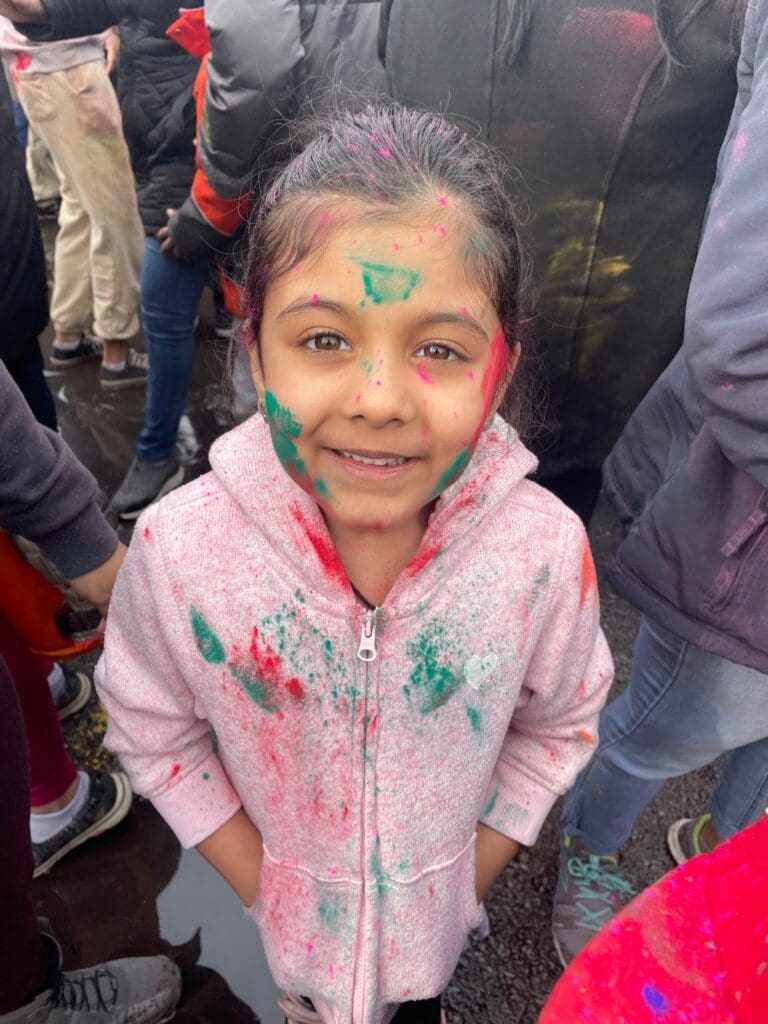The spring season unites people to forget the past and start everything fresh. Many countries welcome the arrival of spring and the end of winter with festivals. Holi is a Hindu festival that originated in India and celebrates love, winning over evil and vibrant spring. India is known for its diversity and culture, but this festival of colours is celebrated worldwide in many ways and for many purposes. Holi falls on March 8 this year, but according to the Hindu calendar, celebrations start on the evening of the Purnima, the full moon day at the end of the month of Phalguna.
Many International Students miss their family and friends during this festival as it is the celebration of togetherness. Komalpreet, a DMIT student at NAIT, expressed her views on the Holi celebration.
“Holi … is a festival of colours and I do love colours a lot. Secondly, Holi also celebrates the arrival of spring and the end of winter, and spring, for me, is the best time of the year. So, I really love it for that,” she said.
“You might find it funny as well, but I would always begin the preparations of this festival by finding old clothes to play [Holi]. Because I would always go into my wardrobe and I would find my oldest clothes so that I can play with colours without even worrying about my clothes getting dirty,” Komal explained. “I used to go shopping earlier to buy Holi colours. I used to buy balloons. I used to buy water guns. I was always so excited, and I got every single colour that I saw at a shop. And then I used to come back home. Fill the balloons with the coloured water so that I can burst them on my brother. And then finally, I just got all wet, dyed up with colours, and everything was just so much fun.”
Anubhav Nandaloll, a Business Administration student at NAIT, described Holi in two words: “fun and celebration.” Nandaloll started celebrating by organizing a “Holi Arts and Crafts” event on Mar. 3 through the International and Intercultural Community Centre on campus.
Holi is one of the most famous Hindu festivals because it is the complete package of rituals and fun—here’s some history about why and how it’s celebrated.
Why do people celebrate Holi?
There are many tales behind this celebration, including the tale of Krishna and Radha’s love.
Krishna is a blue-skinned Hindu god and an avatar of the supreme Hindu god Vishnu. Krishna fell in love with a beautiful fair-skinned girl called Radha, but he had an inferiority complex in expressing his love to her. Krishna’s mom advised him to dye Radha in whichever colour he wanted to feel the confidence to express his love. Through this act, Radha and Krishna prove that there is no discrimination in love.
Another tale describes celebrating the defeat of evil Holika. It begins with Hiranyakashipu, the ancient king who claimed to be immortal and demanded to be worshipped as a god. But his son Prahalad was a devotee of a different deity, Shri Krishna. This infuriated Hiranyakashipu, and he attempted to kill Prahalad by seeking help from his sister, Holika. Believed to be invulnerable to fire, Holika entered a bonfire while holding Prahalad. But by the act of good, Holika was burnt to death, and Prahalad came out unharmed. People celebrate this incident by lighting a bonfire on the first day of the Holi, which resembles winning over evil.
How do people celebrate Holi?
In India, there is a place called Mathura, the birthplace of Krishna and Radha. In Vrindavan, a city in Mathura, people celebrate Holi by playing with flowers (Phoolon wali Holi).
Another Holi ritual in Mathura involves playing with sticks and shields (Lathmaar Holi). Women chase men with sticks and beat them, and men protect themselves with shields. Everyone gathers at one place to play and watch this. This play is a resemblance to Krishna Leela, where Krishna and his friends did mischievous acts and ran from Radha and her friends to protect themselves with a counterattack.

Different dance forms signify the arrival of Holi in India. “Holi Kunitha” is one of the dance forms performed by the community. Tribal people have unique dances and songs to celebrate Holi. The Bollywood cinema industry makes albums specifically for the occasion of Holi.
On the day of Holi, people wear white clothes as a ritual; they love to play Holi with coloured water. Water balloons are filled with the coloured water and thrown at each other. In Ancient times, the colour powders were organic; for yellow, people used turmeric, a natural antibiotic. By playing with these powders, they protected themselves from diseases. People of all ages are included in these games. No one is spared! After throwing coloured water balloons at people, they say “Buro na mano Holi eh” which means: “Don’t feel bad, it is Holi today!”
There are many rituals and tales behind this festival that change from place to place. But the core purpose of Holi is the celebration of love. That’s why it’s celebrated by everyone without any differences. Holi is a day to meet others, play with them, laugh and dance with family and forget, forgive and repair broken relationships. NAIT students who want to learn more about Holi can reach out to the International and Intercultural Community Centre. Students can also check out events lined up in Edmonton like the “Colour the Snow” themed Holi Festival on Mar. 11 in Emily Murphy Park.






